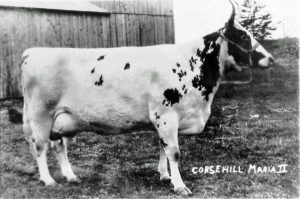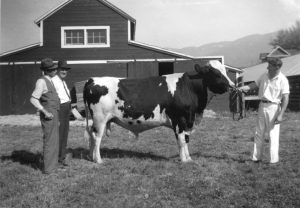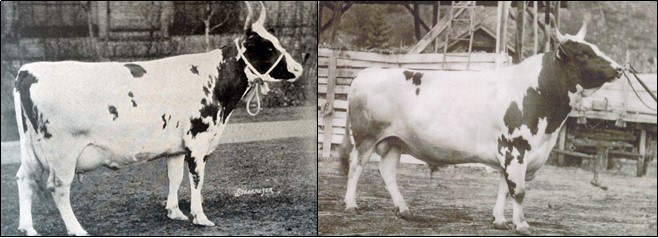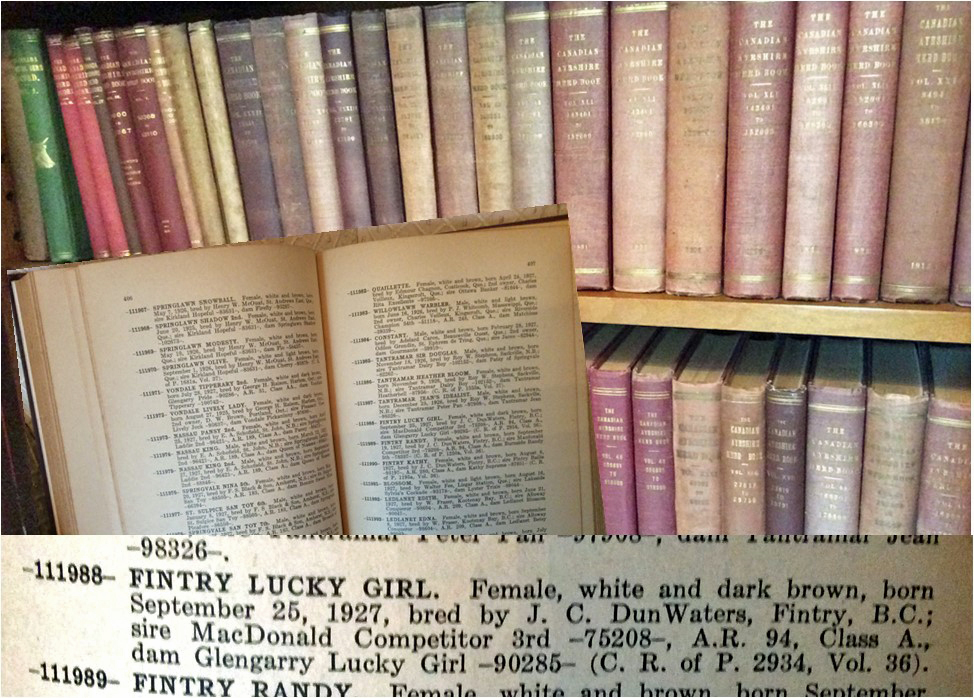The Early Dairy Industry in B.C.
When Captain Dun‑Waters began dairy operations at Fintry in the early 1920s, the industry was already established in the province. A few dairy farms in the Lower Mainland held Ayrshires, while most of the Okanagan cows were Holsteins or Jerseys. Dun-Waters’s promotion of the Ayrshire breed and its individual milk production awards increased the breed’s popularity. Today, Ayrshires number about three per cent of all dairy cows in the province. The most common dairy breed in Canada today is the Holstein (usually white with black markings), which make up almost 94 per cent of the Canadian dairy herd.
Most of Fintry’s Ayrshire cattle were carefully selected or bred, with formal names and registrations. Each animal usually also had a shorter nickname. The Ayrshire calf “Lucky Girl,” born at the Fintry ranch in 1927, was a case in point. The Ayrshire breed was new to the Okanagan and this calf brought high hopes for Fintry. Her mother had been specially selected from a high-producing dairy farm in Eastern Ontario, brought to Fintry by train, then bred to the Fintry estate’s top bull. She was officially named ”Fintry Lucky Girl,” and listed in the Canadian Ayrshire Herd Books.
To this day, dairy cattle are carefully selected and bred. Each cow is listed in a Herd Book, a registry documenting its sire (father) and dam (mother), markings and colouring, and the name of the farm. Naming rules are set by the registry, with the breeder’s prefix first then usually formal names that recognize the cow’s ancestry. Today, cows are also identified with a tattoo or electronic ear-tag that includes the breeder’s farm letters and a letter representing the year of birth (for example, 2002 was the letter ”M”).





